A fairly common and popular United States Airforce GPU.
This is the case that the GTP30 comes in. The GTP30 itself and all the important and serviceable items will be removed and the box scrapped as its such a large size.

Side view of the engine box with panels removed (kind off).
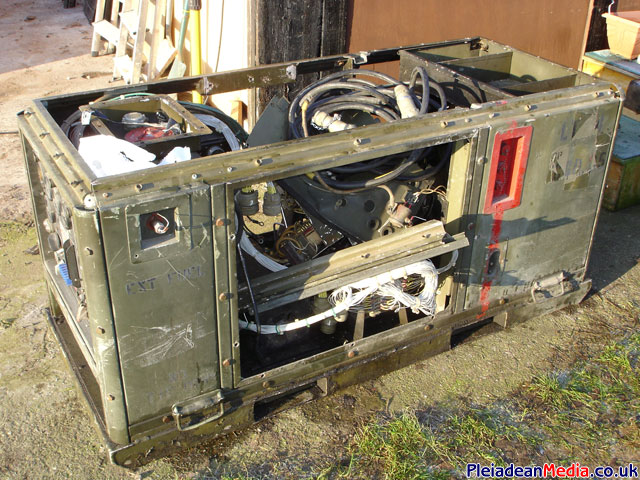
This is what the Garrett box looks like after it had been hit by a PD missile, I’m lucky really, as it seems that the turbine itself has escaped without any obvious damage!
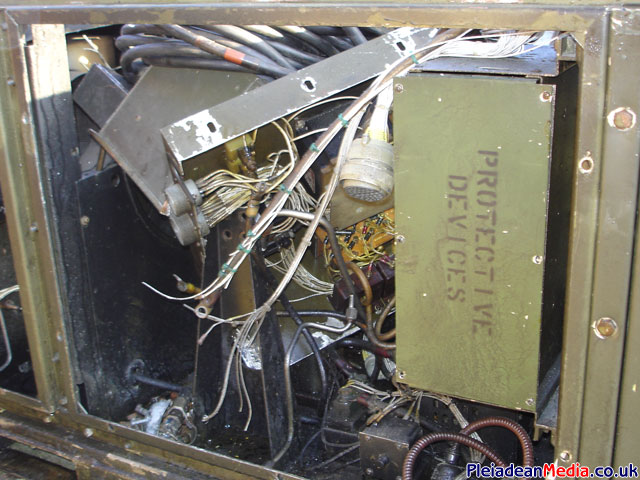
The control panel of the Garrett GTP30, with gauges for the AC/DC and Engine. There may be some gauges and switches that are salvageable which I will use for running of the engine.

View of the Igniter box, Starter Motor, fuel pump and flange where the alternator bolts on to.
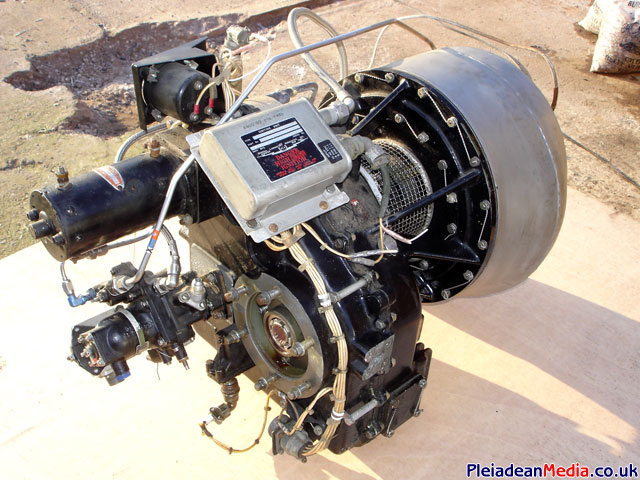
View of the Engine to the left and the gearbox to the right.
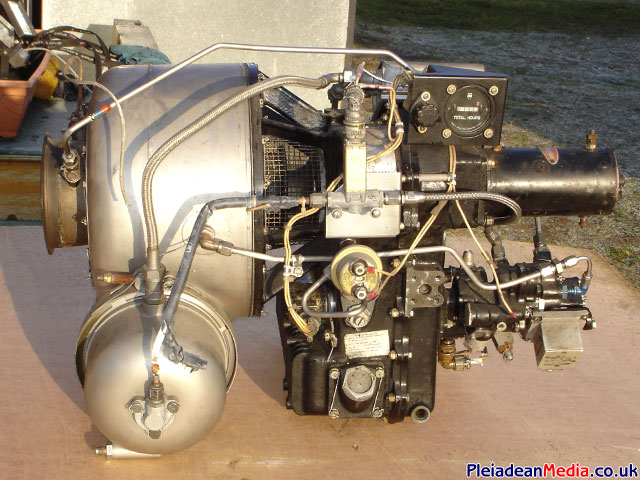
Alternator splines can be seen from here.

Combuster, Starter and Fuel Pump.
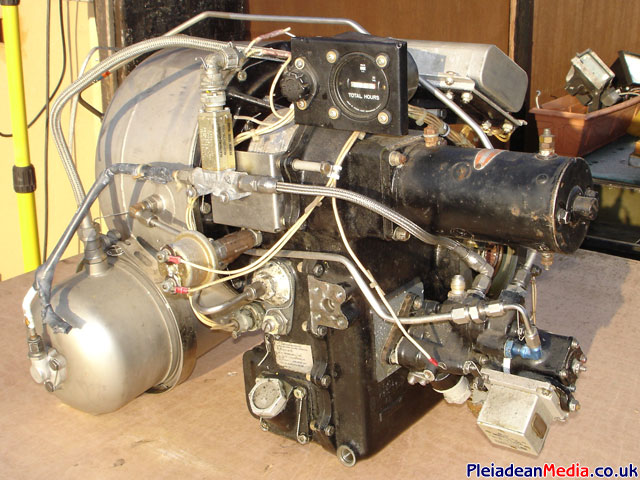
Exhaust and Combuster view.
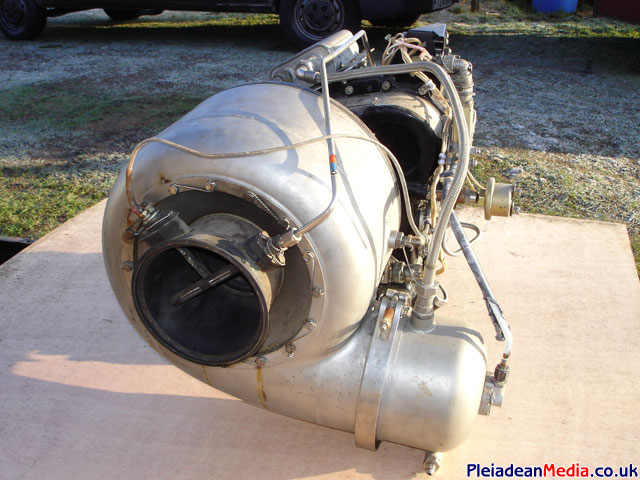
Compressor Inlet guard.
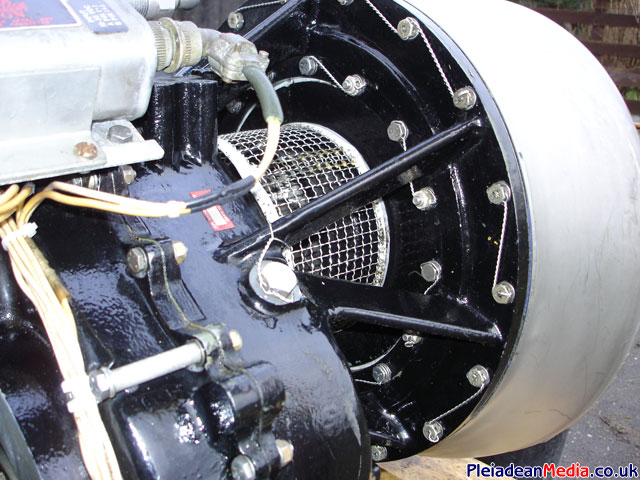
Paul working on removing the fuel tank assembly.
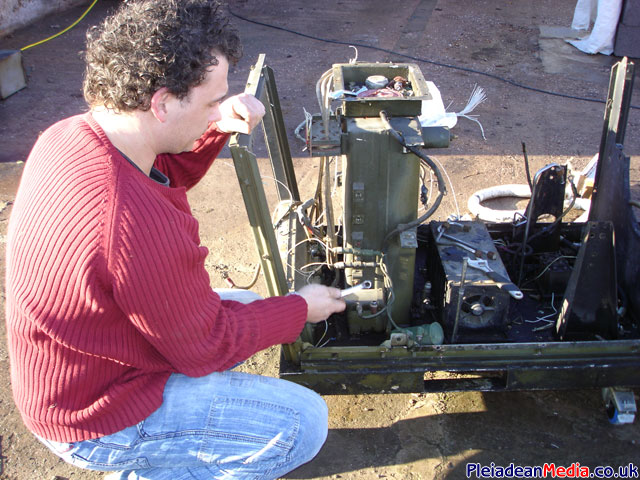
As ever a nosey little dog. Anything that can be used again will be removed.
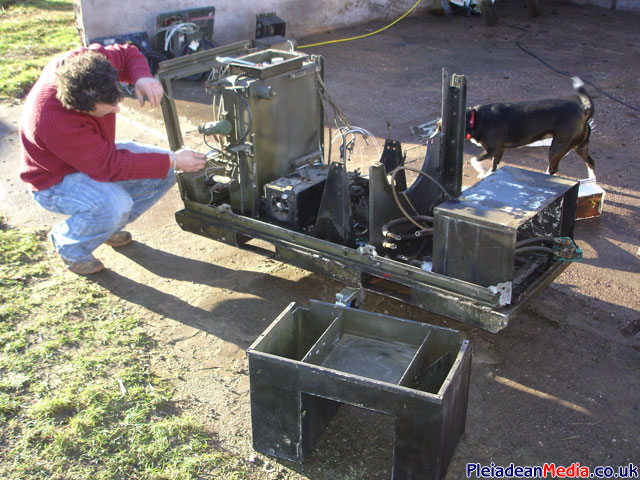
What we were left with after the frenzied attack!

The parts that we scavenged from the left, Control Panel, Accessories Wiring Looms, Multi Pole Connectors and the Exhaust Silencer.

Now I have started making a frame to house the turbine. This is what I will use for the testing of my new computer control panels. Well that’s the plan.
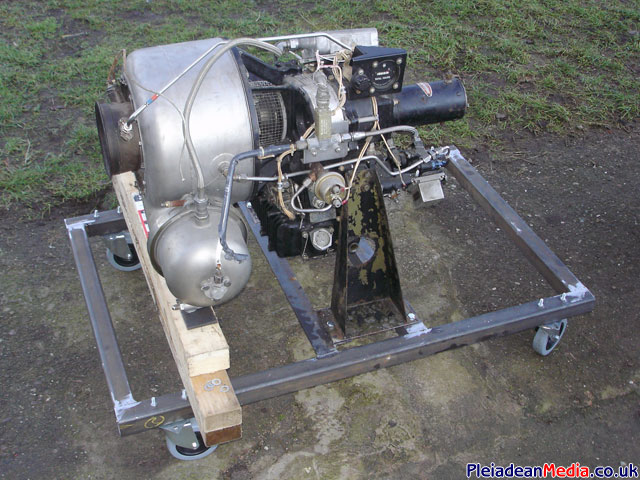
I will use the original fuel tank from the APU, may as well as its built for the job. You may have noticed that the Alternator is missing, this was a considerable counter balance for the engine, so a support will have to be fabricated.
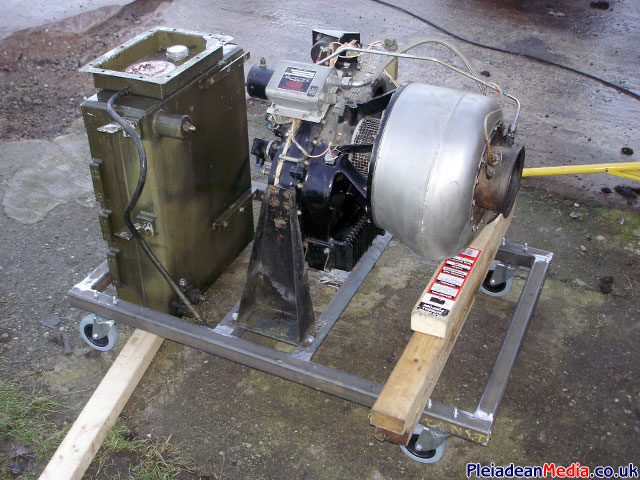
I’ve started re-wiring the electrics on the engine and began with the Fuel HP Cock. I’ve decided not to completely remove all of the old cable and will keep it where it appears to be in good condition to save time.
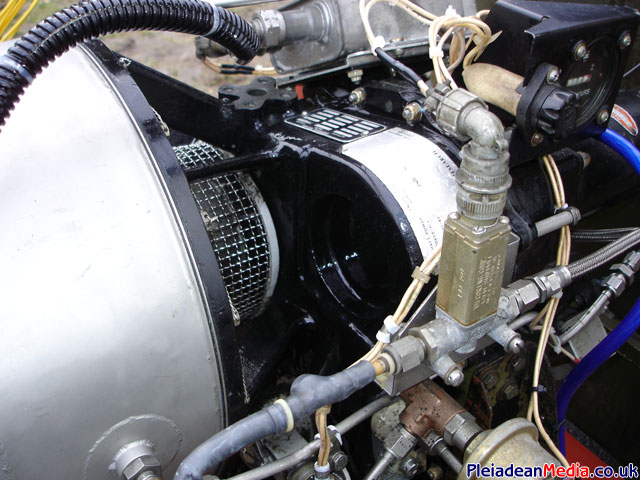
This is the completed fuel system. From the bottom left of the tank via a stop cock to the fuel pump (Far Connection) then a loop the loop and in to the fuel filter assembly, from here the feed goes to the inlet of the GTP30 fuel pump (Right hand of picture).
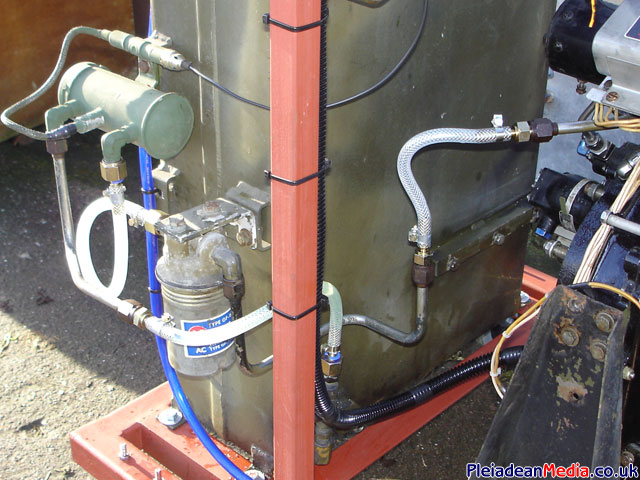
This gives you an overview of the basic control panel. The temporary 200 Amp circuit breaker will be replaced by a 140 Amp Breaker in due course.
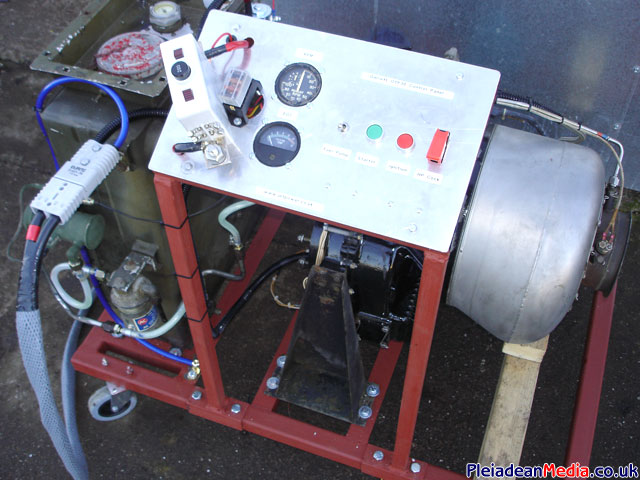
A picture showing the wiring under the control panel, very basic but reliable. At some stage soon I will attach a computer port so that all the controls and telemetry can be accessed from a PC.
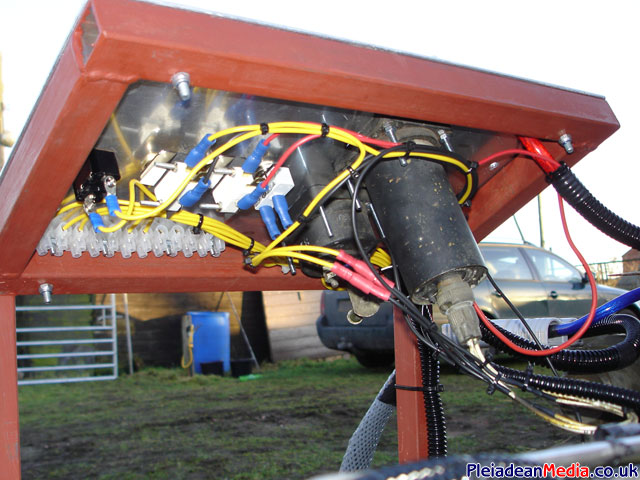
I have now removed the Atomiser for a check up and have taken this out of focus picture. The Injector pattern now seems to be not far from perfect and consequently I am very happy with the spray. I hope this puts an end to the hot starts.
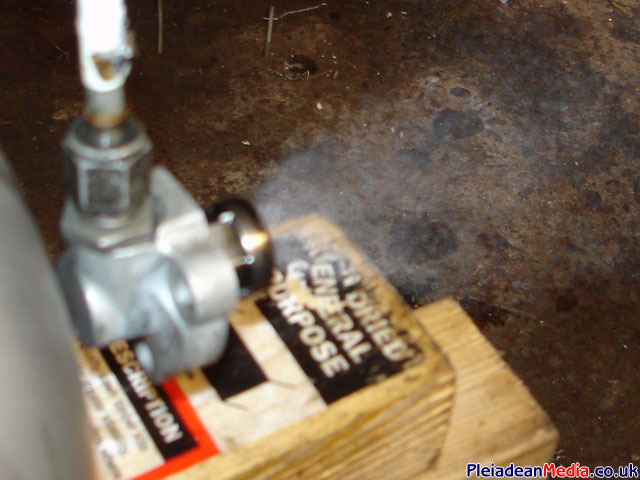
The front support has now been fabricated, and has 2 hinges to allow for the extremely minimal expansion of the engine when hot. To be honest it probably wasn’t worth the effort, but there we go.
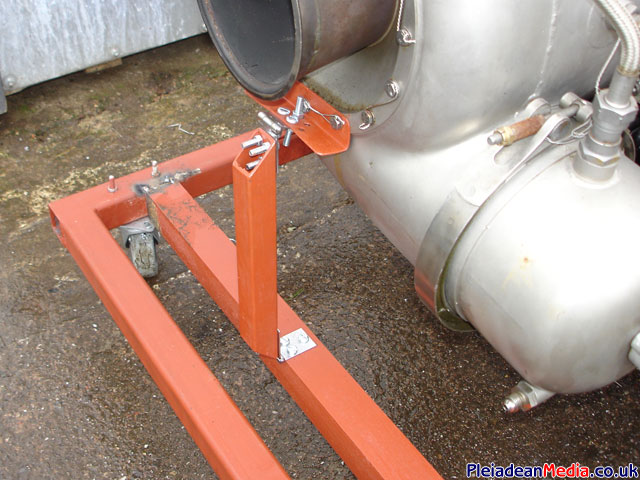
The proper circuit breaker has now been installed, but I may have to at some point upgrade to a more substantial current capacity.

The oil drain plug has now been attached with a hydraulic pipe for easier transfer. I have used Aeroshell 308 Turbine oil as a replacement for the original lubricant specified, this was matched by Silmid.

This is my new Digital Thermometer designed to work very precisely with K Type Thermocouples. I made a reading of the GTP30 resting temperature and compared it to the Thermocouple that was supplied with the unit and there was only a few degrees C between them. So I have now run the engine using the new device and was very surprised to find that the exhaust temp when running at 100% was only 260 Deg C or 500 F, now that’s cool!
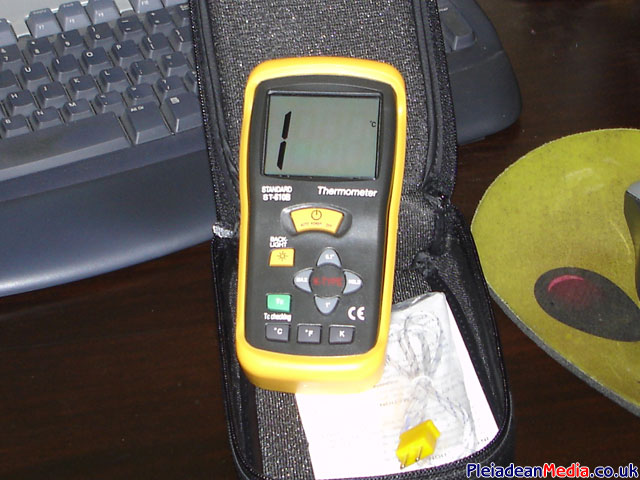
Pneumatic RPM Sensor, EGT Thermocouple and a beautiful undamaged turbine wheel, this is where you can tell the quality of the engineering of the engine.

Not the best job in the world I know, but this is a fuel trap for the combustors drain valve, it just saves the excess kerosene being squirting on to the floor.

Assuming the hour meter is correct, the engine has probably only just been broken in.
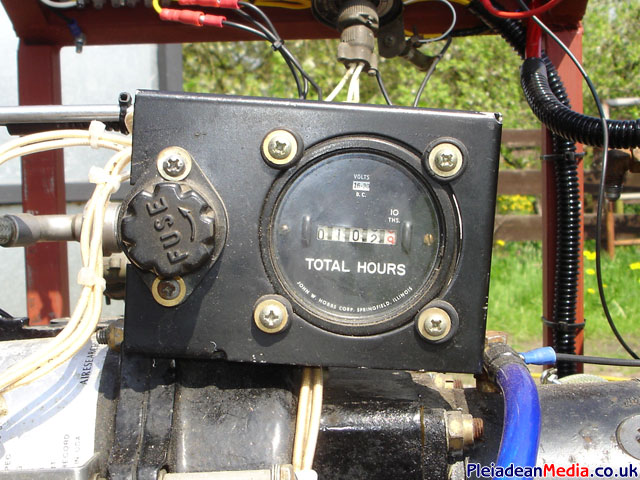
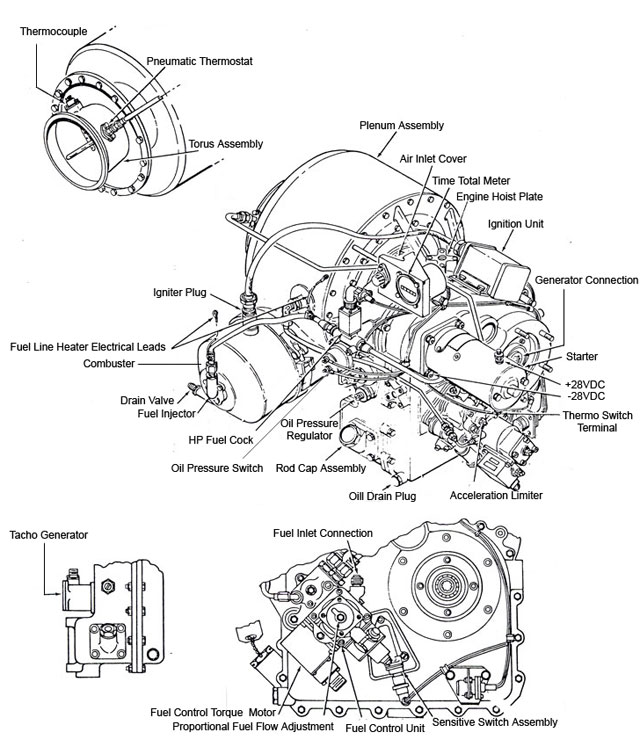
First Test Run, Starting Order is Priming Pump, Starter, Igniter then HP Cock. Ignition is delayed while the fuel reaches the injector nozzle.
Second Test Run
Note the RPM and EGT Movements.
Hot Start, Adjustments needed. Fire, Not healthy I know, but you cant beat a bit of flame. I will need to check the Atomiser’s spray pattern and crack pressure to try and stop this.
Starting order is now Priming Pump, HP Cock, Igniter then Starter. A small flame at the beginning, but this does not constitute a hot start.
